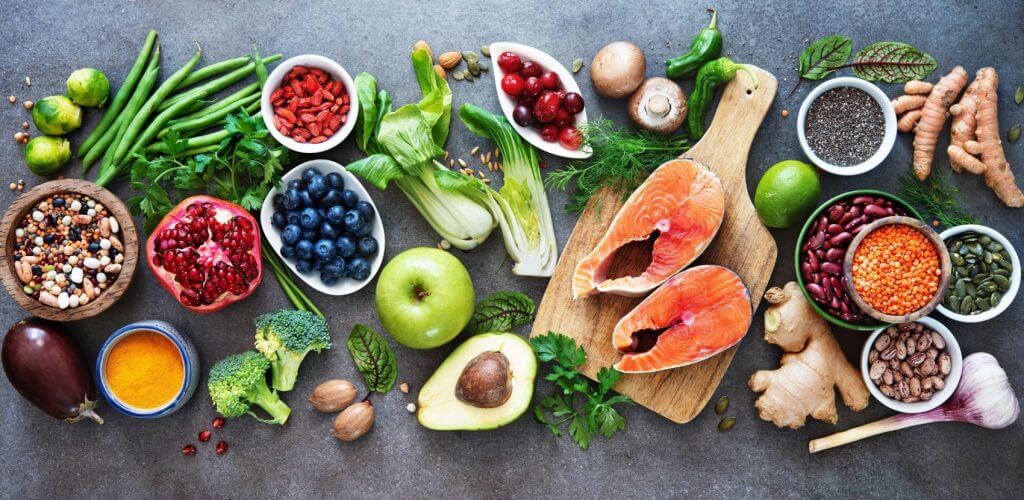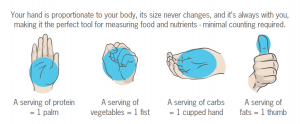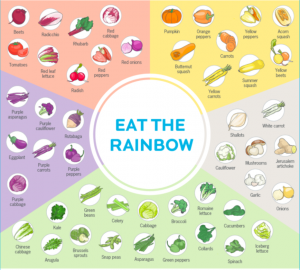Our digital newsletter keeps you up to date with everything happening at Château Bouffémont – including recipes, interviews and activities in the local area
Karim Yameogo is a sports coach in his private coaching studio CO2 in Paris -Courcelles and the Healthcity Fitness Club on the Champs Elysées. He is very passionate about sport and how it affects our daily lives and is also a certified Precision Nutrition coach. Here he gives us his top tips on how to eat well during lockdown.

There are currently almost 1.7 billion people worldwide on lockdown due to the Covid-19 epidemic, already for a duration of over four weeks.
As you are expending less energy, you’re bound to feel like you’ve put on a few kilos and are a bit out of shape.
Whatever your goal: staying trim, losing weight or just keeping fit, it’s important that you develop good eating habits and use this opportunity to make sure they stick in the long term.
The aim is to eat a healthy, balanced and varied diet during the quarantine period. This has the added benefit of keeping your mood up and getting you ready for the end of lockdown.
Here we’ll dive into the four main habits you need to get into to shape and my top tips for sticking to them:
- Hydration
The first habit you need to adopt is to keep well hydrated. Our bodies are made up of 60% water, so it’s important to drink enough during the day to renew our cells and clean out the body’s filtrating organs.
My top tip: To make sure you drink enough you can drink a large glass of water before you eat anything in the morning, another one before each meal, and a glass before you go to bed.
If you are one of those people who forgets to drink, there are a number of smartphone applications available (ex: Drink Water Reminder) which send you regular notifications to make sure you drink a pre-determined amount during the day.
Try to limit your consumption of sugary drinks, if you drink a lot of fizzy drinks and find it hard to stop, try to make your own (sparkling water + fruit juice or squash, for example).
My top tip: Drink at least 30 ml/kg of bodyweight per day.
For example: If I weight 64 kg I need to drink (64*30=1920 ml) or 1.9 L per day.

- Food
Staying at home means you are less active, spend more time sitting down, walk less and can’t do your usual physical exercise at the gym, so of course you are burning off less calories than usual.
It’s therefore a good idea to try to reduce your daily calorie intake by around 15% – 20%. In practice this simply means eating a bit less so your body doesn’t have any surplus to store.
My top tip: Eat until you feel about 80% full, you need to listen to your body and stop eating as soon as you stop feeling hungry.

- Eat the right portions of macronutrients
So, first of all, you need to understand what macronutrients are.
Put simply, these are the energy sources your body needs to function and they break down into three categories:
Proteins which help build and maintain muscle. Our bodies simply cannot function properly if they don’t get the right amount of protein.
Fats which protect our cells and fuel our brains.
Carbohydrates which provide us with the energy we need during the day.
My top tip: Use your hand as a guide to determine how much you should be eating (see graphic below).

- Stock up on micronutrients
The best option is to eat as much unprocessed food as possible, so make use of the extra time during lockdown to cook from scratch.
Stock up on micronutrients to boost your immune system (vitamins A, B, C, D, minerals, iron, sodium etc.) and make sure you also eat as much fruit and vegetables as possible (carrots, squash, mushrooms, cabbage, spinach, bananas, citrus fruits, apples, pears etc.).
Play around with different colours and a mix of both raw and cooked.
My top tip: try to eat a piece of fruit and/or vegetable of each colour every day (see graphic below).
Remember to also include pulses which are rich in fibre and minerals, as well as nuts (almonds, walnuts, hazelnuts etc.) which are rich in omega 3 and 9 and are easily added to your meals.

Try to have your fresh fruit and vegetables delivered by local producers if you don’t have access to a greengrocer, as this will help you to eat seasonally.
Otherwise stock up on frozen produce to avoid having to go out to the shops too often.
My top tip: Season well and add spices to enhance flavour. Using spices reduces salt consumption and adds colour and vitality to your dishes. They are also rich in nutrients and aid digestion.
- Keep moving
Physical activity is really important during this period, the ideal scenario is to do 30 – 45 minutes of exercise every day.
You can choose to follow an online training plan (live training sessions with coaches on Instagram, or a personal trainer who can coach via video conferencing).
If you want to train alone at home with no equipment keep it simple, make sure your movements are controlled, do multi-joint exercises, and keep them varied.
The key is to remain active throughout this period and to try to make exercise part of your daily routine.
If you have children the same principles apply, try to give them homemade snacks and avoid foods with a high sugar content.
To help you with your eating habits, follow CO2 coaching on instagram or visit the website for the dates of our upcoming webinar “How to Eat Healthily” and our future “Weight Loss” challenge.
Feel free to reach out to me directly for more personalised advice.
KARIM YAMEOGO
Keep in touch at @chateaubouffemont